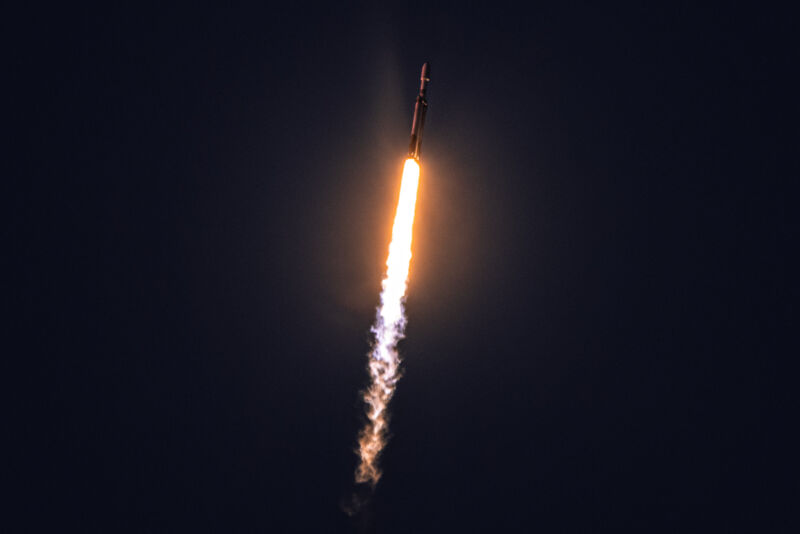
The Falcon Heavy rocket made its fifth launch in five years on Sunday evening from Florida. However, this was the first launch of the triple-core booster in twilight, and this rare evening light provided some spectacular new insights into the liftoff and return of the rocket.
This post-sunset lighting can be seen in the introductory image above, which showcases reddish hues bouncing off the white cores and upper stage. That color comes from the rocket gaining enough altitude to be in line of sight with the Sun.
Now the second-most powerful rocket in the world after NASA's Space Launch System, the Falcon Heavy always puts on a great show, with its 27 Merlin engines firing at once. It holds the record for the rocket with the most first-stage engines to reach orbit—at least, it will until SpaceX's Starship rocket flies later this year.
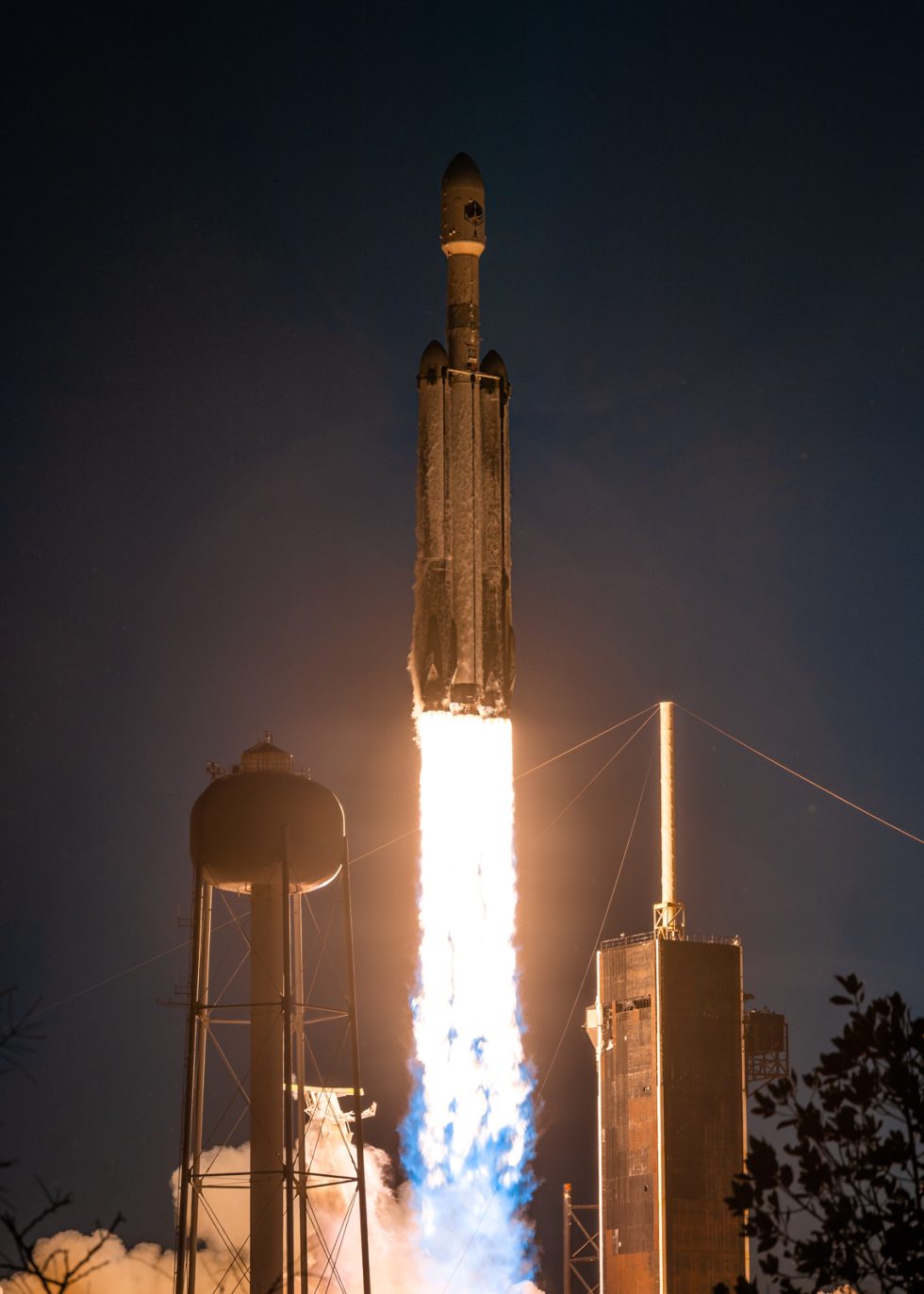
Sunday's launch was named USSF-67 and carried two payloads into geostationary orbit for the US Space Force. This was the second Falcon Heavy launch for the Space Force, with another scheduled for later this spring.
This engine shot showcases the three separate cores of the rocket, each a modified version of SpaceX's Falcon 9 rocket, with its own individual plume.

The rocket is seen here climbing into the sky before booster separation, which happens about 2 minutes and 30 seconds into the launch. After this point, the side-mounted boosters will separate from the center core of the rocket.
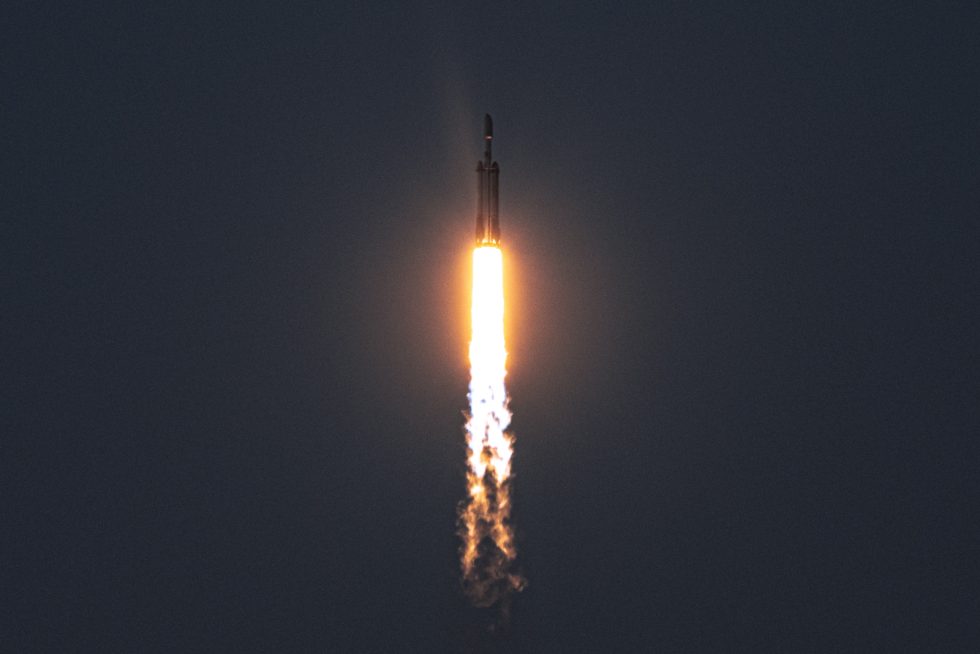
The center core then burns for an additional 30 seconds before its kerosene and liquid oxygen propellant are expended. In the meantime, the side-mounted boosters must arrest their forward motion and reorient themselves for a return to landing zones a few kilometers from the launch site.
In this image, the center core can be seen burning toward orbit with the USSF-67 payload. In the meantime, the side boosters are firing to begin the return to Earth. This maneuvering is complicated during a Falcon Heavy by interactions with the center core plume. During a Falcon 9 launch, of course, there would be just a single Merlin vacuum engine powering the second stage at this time.
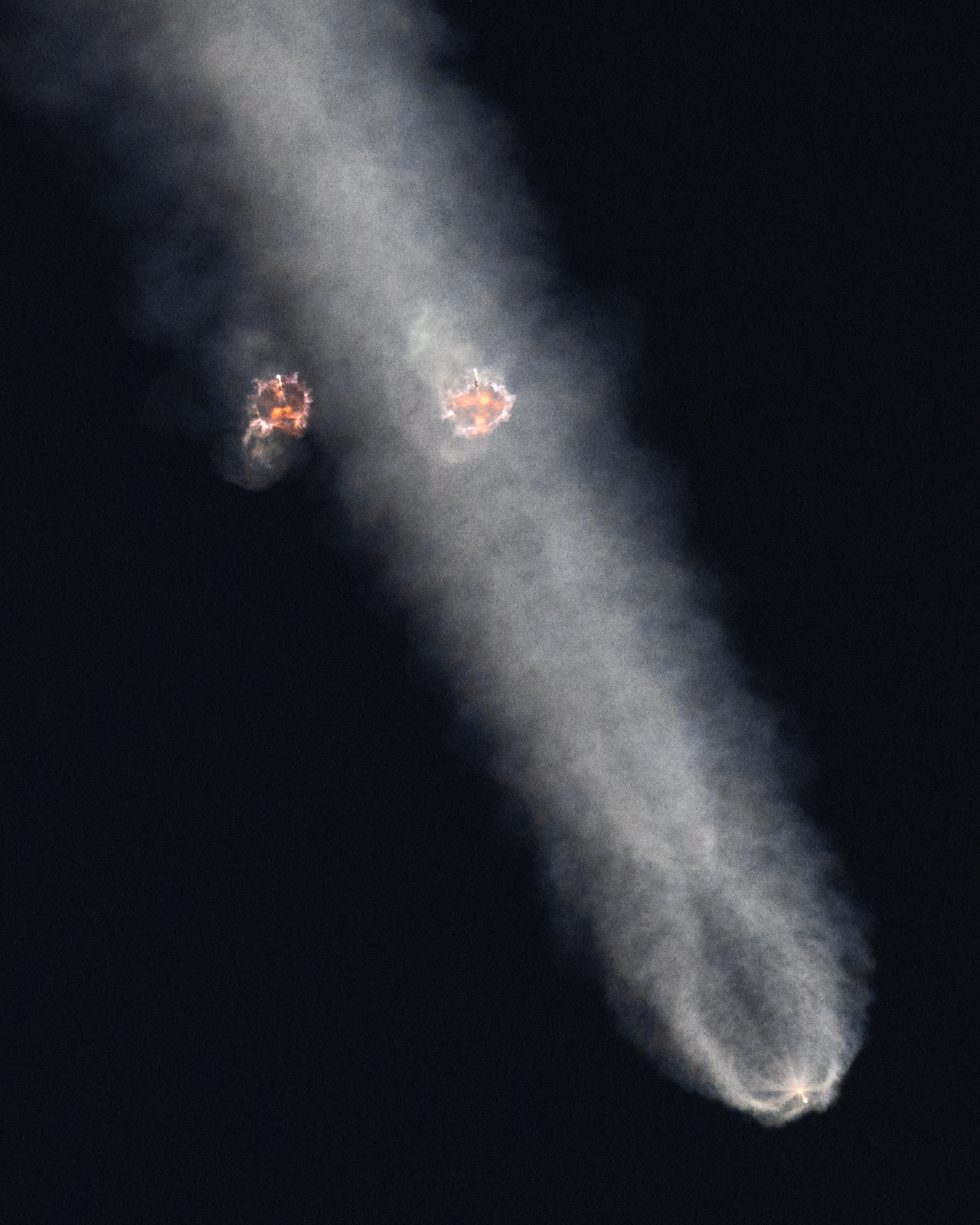
After slowing down for their return to Earth, the side boosters perform a near-continuous series of cold-gas thruster firings. These nitrogen-powered thrusters help keep the rockets in a proper orientation as they descend toward the planet, and they survive reentry through Earth's atmosphere.
These firings also looked stunning on Sunday evening in the fading light.
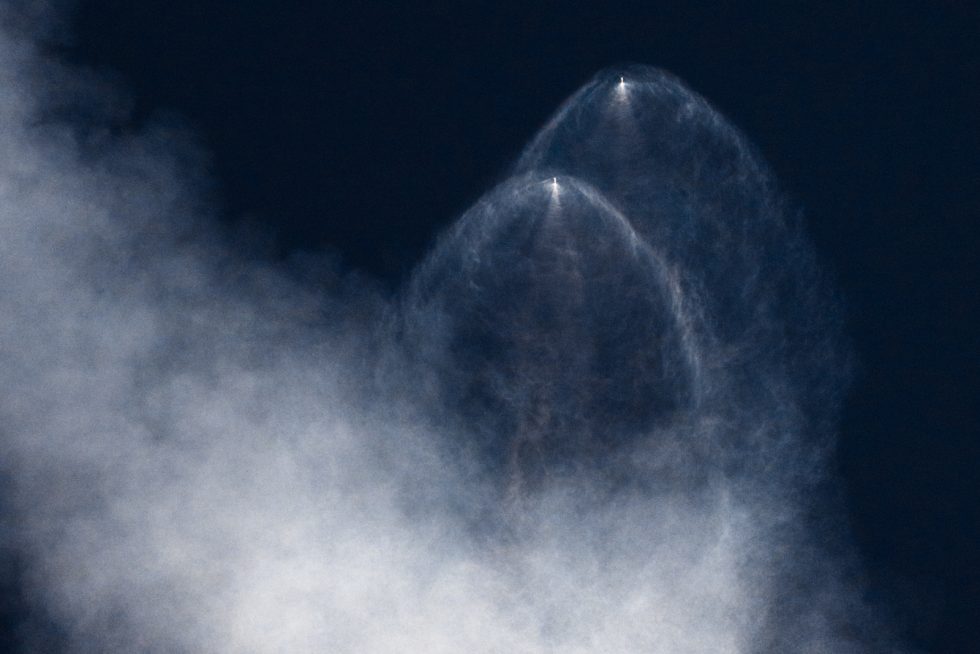
Our photographer, Trevor Mahlmann, set up shop near the Cape Canaveral Lighthouse to capture a unique view of Sunday's launch. Here is a streak showing the reentry and landing of the side-mounted boosters.
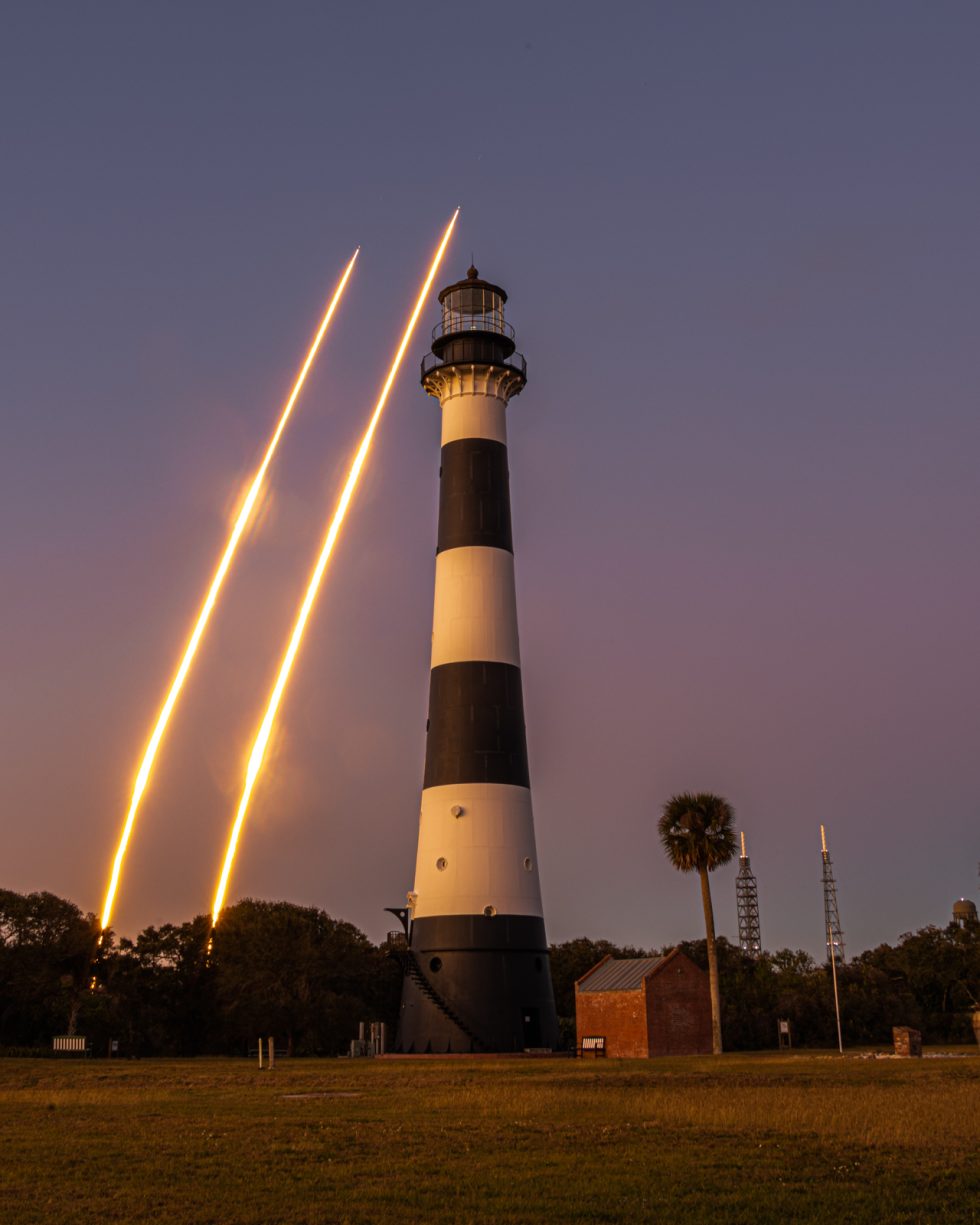
And then, because it's pretty, he captured a shot of the noctilucent clouds in the aftermath of the Falcon Heavy launch on Sunday evening. These are some of the highest clouds that can form in the atmosphere, and they do so when water-ice crystals condense on particles of tiny debris in the upper atmosphere.
Rocket launches can contribute to these clouds by producing water vapor in the upper atmosphere.
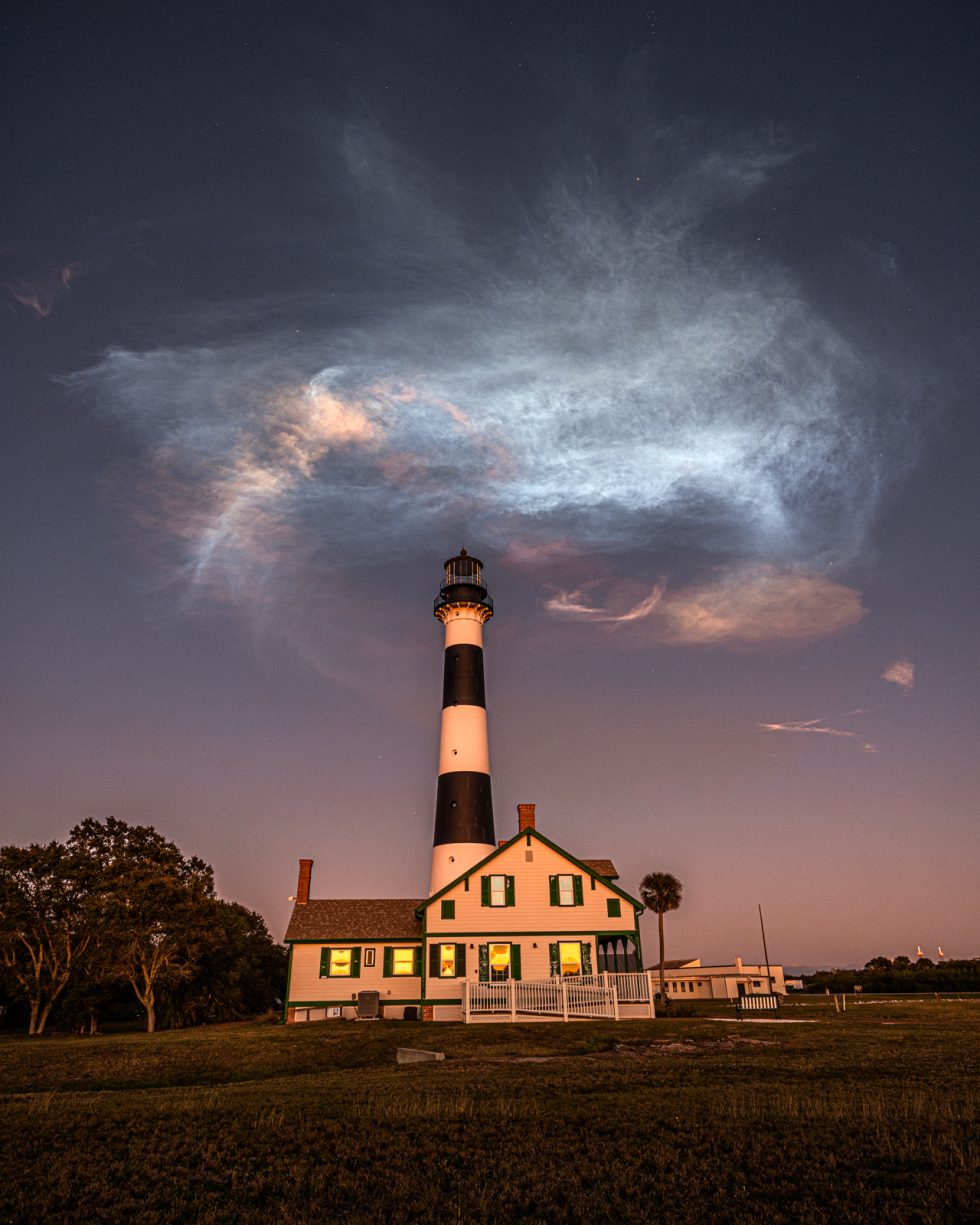
Finally, Mahlmann put all his observations from the lighthouse together in this single time-lapse of the launch and booster return.
If you missed this launch of the Falcon Heavy rocket, don't despair. Future missions this year include a commercial mission for the satellite communications company ViaSat in March, the Space Force's USSF-52 mission in April, a commercial mission for EchoStar in May, and the Psyche asteroid mission for NASA in October. Those dates, as ever in the launch business, are subject to change. Whether any of them will be at dusk or dawn, however, is still unknown.
https://ift.tt/OQh2mH4
Science
No comments:
Post a Comment